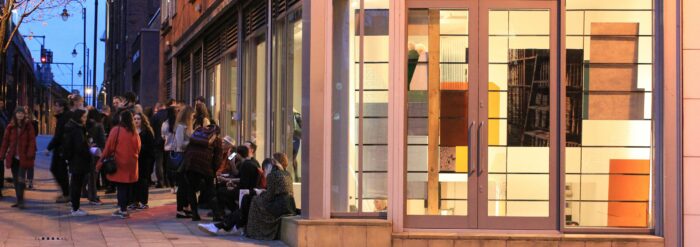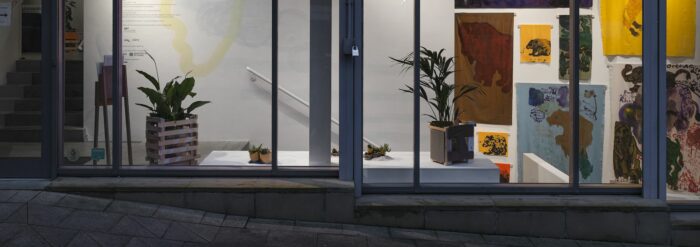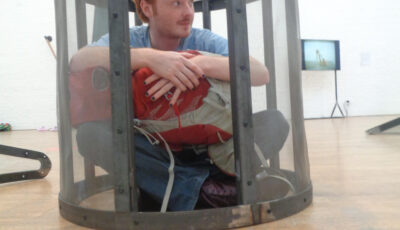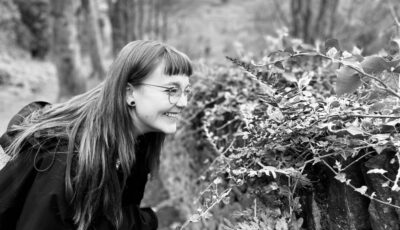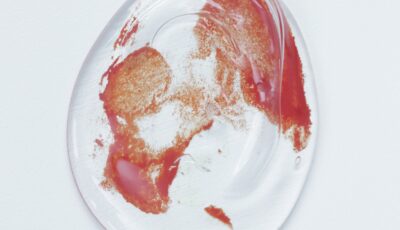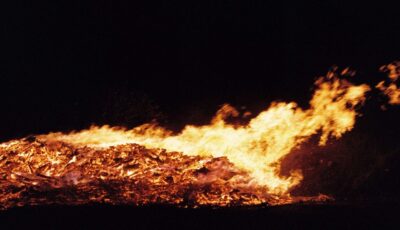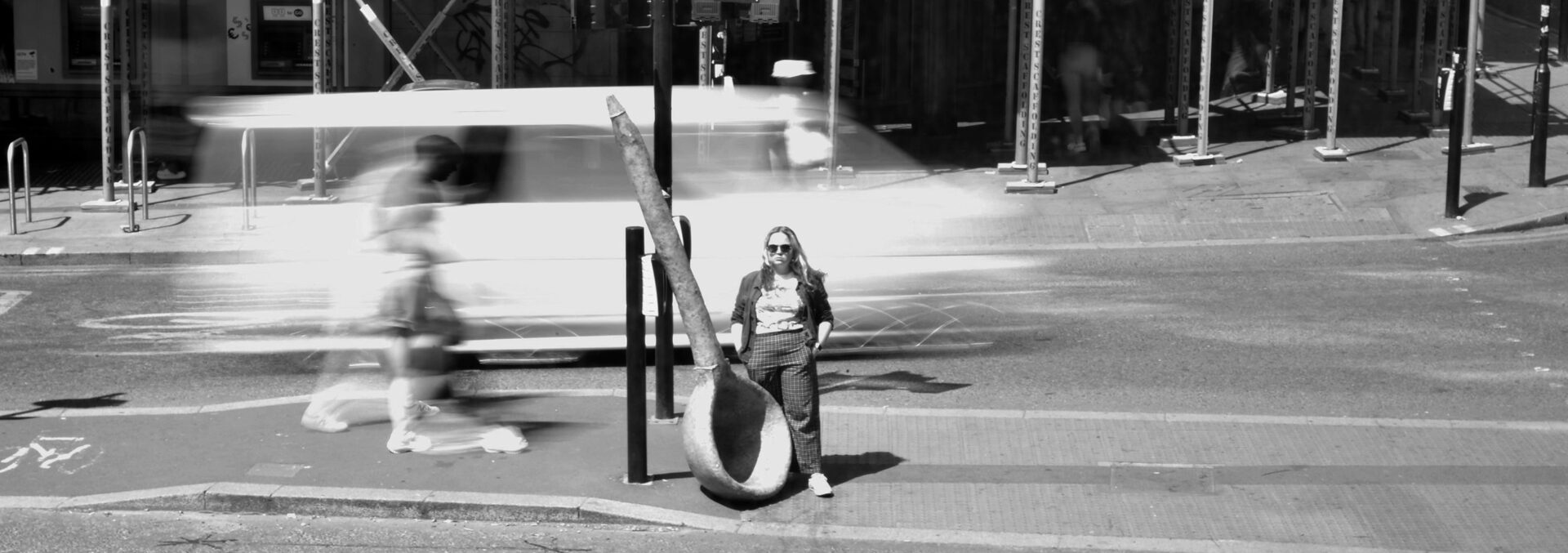
Artists and Sustainability Spotlight: Nicky Nadine
Posted on 12 May 2025
This month we’ve invited Nicky Nadine to contribute to our ongoing series Artists and Sustainability Spotlight, where we ask artists to share short responses about their work and how it might relate to climate change.
Born in Scotland, Nicky Nadine is a neurodiverse British/Ukrainian artist based in Manchester.
Nicky has exhibited widely including in recent exhibitions such as Beyond the Capital’s ‘Manifestations’ hosted at PINK gallery in Stockport. She was awarded the Dean’s Award for the Manchester School of Art Sketchbook Prize and has been commissioned by local record label, Sour Grapes Records, to create gig posters for venues such as; Projekts MCR Skatepark, Big Hands, Gullivers, Deaf Institute, and Night & Day Cafe.
Nicky will be exhibiting with artists Kelan Andrews and Qianjie Nie in Dis/Connect at 1853 Studios from 17th to 31st May.
Don’t miss the preview on Friday 16 May, 6-9pm at 1853 Studios, Osborne Mill, Osborne St, Oldham OL9 6QQ
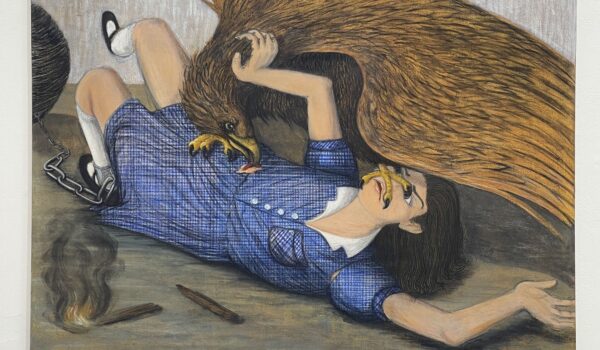
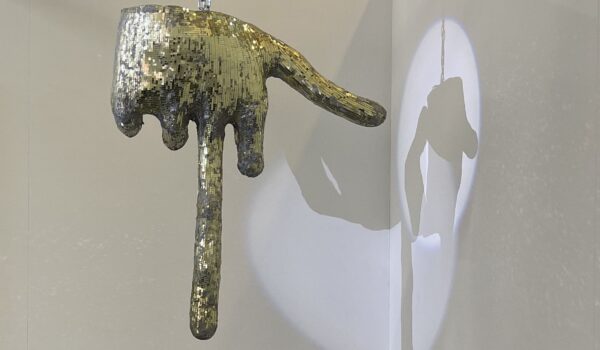
In what ways do you feel your work might relate to issues of climate change and sustainability, in the content of the work, its narrative, conceptually or theoretically? How might it speak to or challenge public discourse?
At first glance, it might not be entirely obvious how my work connects to climate change and sustainability. My primary focus is on the human experience and our connections to one another — often exploring the less idealised aspects of these relationships. However, sustainability becomes more evident in the sculptural side of my practice, where most materials are repurposed or found. With my pastel paintings, the link is less explicit, but conceptually, that’s where the connection emerges.
I’m compelled to address the sense of hyper-normalisation in the world — the way we acclimatise to issues like trauma, domestic struggles, or the endless repetition of wars. Many of my pieces explore the mental and emotional toll of surviving such events. This stems from my own experiences of surviving an abusive mother, a reality I still occasionally find myself contending with.
Put simply: trauma is not sustainable. Austerity is not sustainable. War is not sustainable. When people are focused on survival rather than living, they cannot prioritise helping the planet. Feeling safe — physically, mentally, and financially — is essential before anyone can focus on broader issues like climate change.
That’s why I centre my work on our human connections. If we strip away everything materialistic or superficial, what remains is our relationships with one another. These relationships define us. Unfortunately, I often feel our governing bodies lose sight of this, caught up in egos and politics instead of serving the people they represent.
In my recent piece, War (visually recognisable as a giant hanging egg), I explored the destruction in Ukraine. Rather than illustrating war through gunfire, explosions and army personnel, I focused on the people and the silence of destruction around them. All they have left are their connections — to the living and the dead. The piece became deeply personal as I worked on it. Midway, I learned my great-uncle, who fled his home in Chernihiv, had passed away from leukaemia in Estonia. My memories of visiting him and his wife as a child became intertwined with the work. Losing contact with family and friends in Kyiv after removing my abusive mother from my life further deepened this sense of loss.
At its core, my work highlights that people want the freedom to form meaningful connections without hindrance, to have support and understanding through their struggles. They want to live, not just survive. Should the responsibility for addressing climate change fall on these individuals? Or should it fall on the entities and individuals who perpetuate conflicts and inequalities?
By addressing topics like war, violence, and austerity, and holding those in power accountable, I hope my work can challenge disunity and open up conversations. Since humanity and the environment are inextricably linked, reducing these issues would collectively put us in a better position to address climate change and sustainability.
With regards to the materials, processes, and techniques you use to produce your work, are there any practical decisions you make with regard to climate change and sustainability?
I’d describe myself as a resourceful artist, constantly finding materials in everyday life and transforming them. My dad would probably call me a hoarder, as I’d often insist, “But I can use it for art!” Now that I have my own space, I can embrace this practice without his grumblings.
For me, anything can become a material. By seeing objects for their potential rather than their original purpose, I am constantly recycling, repurposing, or reusing. Beyond the practical benefits, this approach adds layers of meaning to my work.
I find joy in imagining how objects can be transformed. Often, it’s a chance discovery—a seemingly useless item—that sparks ideas. If something already exists and fits my purpose, I see no reason to buy something new.
With my pastels, sustainability is trickier due to the nature of pigments and manufacturing. However, I experiment with using alternative surfaces like used raffle tickets or paper shopping bags. My fixative is CFC-free, and I collect excess pastel dust to repurpose in future experiments.
For my sculptures, I’ve developed a papier-mâché technique that goes over a structure made of scrap canvas (from my paintings), chicken wire (sometimes it’s excess from my aunt and uncle’s chicken coop), and other discarded materials. For War, a technician offered me polystyrene that had been sitting behind a shed for 20 or so years. For Mother (the big spoon), I sourced cardboard from Sainsbury’s opposite my then studio. Even the newspapers I primarily use for my paper-mâché come from the handful I grab when leaving the bus.
Ultimately, the best decisions I make involve observing what others discard and speaking to them. More often than not, people are glad to offload things they no longer need, and it keeps these materials from ending up going to waste.
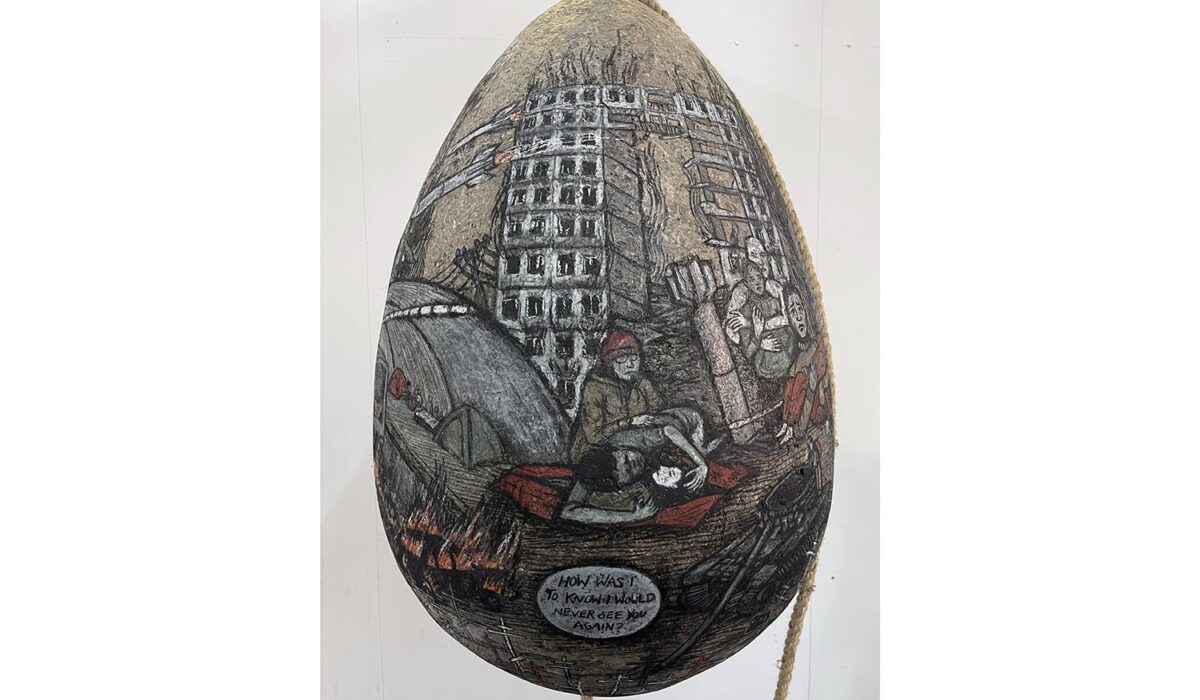
In general, how do you feel galleries, art spaces, artworks, and artists might contribute? What role do you feel they can play in progressive conversations?
Looking back at gallery exhibitions, I feel there’s often an emphasis on creating works that appear new or manufactured — sometimes to the detriment of sustainability. While some works incorporate repurposed materials, they often seem to be in the minority.
Perhaps this stems from a perception that art made with found materials is “naive” or “crude.” After all, repurposing is often associated with school art classes, where budgets are tight. Does this mean art must be materially expensive to be worthy of gallery space? If so, it implies that art is only accessible to those with adequate resources, which contradicts the idea of art as a universal medium accessible to all.
I’d like to see galleries and art spaces embrace sustainability by hosting exhibitions dedicated to resourceful art-making — to more out of the box thinking. Workshops using discarded materials could encourage creative thinking while promoting the magic of turning scraps into something new and meaningful. Such an approach would remind people that what they create is uniquely theirs, a reflection of their individuality and way of thinking.
Are there any tips or advice you’d like to share with other artists or audiences?
Keep your eyes open for materials! You don’t need to hoard (as I do), but consider an item’s potential before throwing it away. What else could it become?
Don’t let the lack of fancy materials stop you from creating. Start with what you have. That “fancy material” can always come later when the time is right.
Sustainability is about finding consistency that doesn’t harm people or the planet. The beauty of creativity is that it starts with your mind and imagination — something that will never harm the world or those around you.
Links
Website
nickynadine.comImages
Banner:
- Nicky Nadine, Causing a Scene with Mother, 2023. Photographed by Franziska Tremper-Jeschke.
From left to right, top to bottom:
- Nicky Nadine, cPTSD, 2024. Image courtesy of the artist.
- Nicky Nadine, The Politician’s Touch, 2024. Image courtesy of the artist.
- Nicky Nadine, War, 2024. Image courtesy of the artist.
